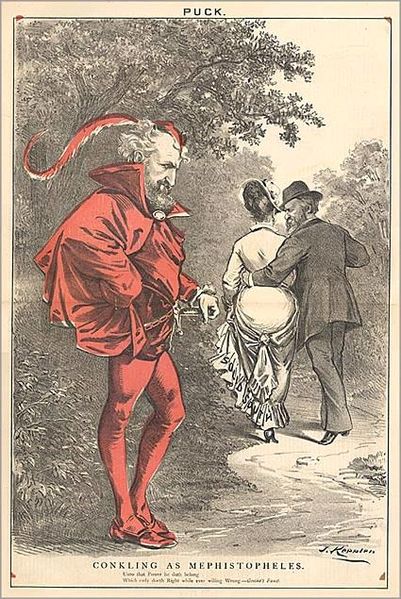The Compromise of 1877
The election of 1876 was contested. Republican Rutherford B. Hayes and Democrat Samuel L. Tilden were close together in the popular vote but the vote totals from four states were disputed; these states represented twenty electoral votes, and Congress had no precedent to follow concerning disputed votes. In January 1877, Congress set up a special electoral commission with an equal number of Democrats and Republicans to decide the disputed votes. Hayes won.
The Compromise was the result of negotiations between the two parties as the Democrats threatened a filibuster; the deal was not formal. Economic benefits and appointments of Democrats to Hayes's cabinet were part of the compromise. But the most important was the removal of troops from the South in April, 1877, which effectively ended Reconstruction and any pretense at racial equality (1).

Interesting picture from Puck (3 Oct 1877). The Caption reads:
" Conkling as Mephistopheles
Unto that Power he doth belong
Which only doeth Right while ever willing Wrong. – Goethe's Faust."
Rutherford B. Hayes and a woman labeled as "Solid South".
Footnotes:
1. James M. McPherson, Ordeal by Fire, 3rd edition (Boston: McGrall Hill, 2001), chapter 22.
Source of photo: wikipedia; author long demised; common domain.
